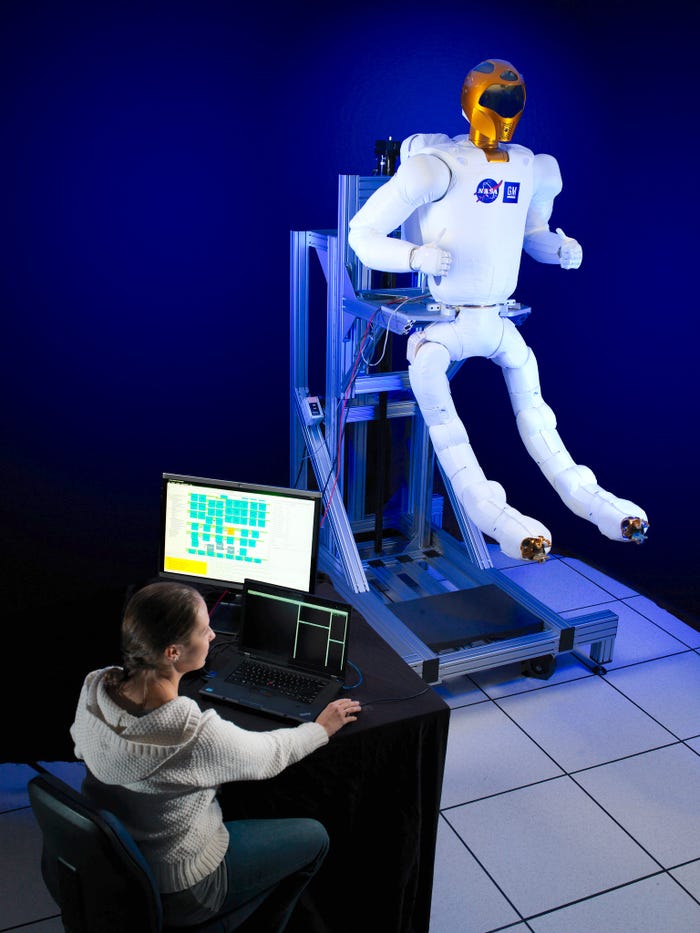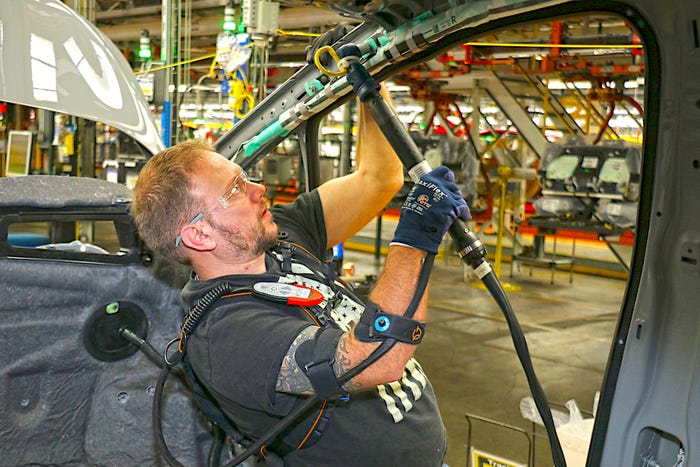Out of this World GM Robotics Come Down to Earth in its Factories
General Motors developed robotic hand technology for NASA's Robonaut on the International Space Station, but now that know-how is helping workers in the company's assembly plants.

General Motors is applying robotics know-how it developed for NASA’s Robonaut on the International Space Station to help its factory workers perform repetitive tasks with less strain.
The RoboGlove was developed from Robonaut’s technology so successfully that it received NASA’s 2020 Innovation of the Year award. The glove provides an electric assist to the wearer’s grip, squeezing with an additional 15 to 20 lbs. of force. It has the ability to crunch at 50 lbs. of force for short bursts, so there is no jar lid that will defy RoboGlove’s grip.
GM workers have tougher tasks than opening jars. GM’s director of global manufacturing integration, Dan Grieshaber reports that the company’s employees have been using the gloves in both vehicle assembly areas and while assembling components like engines and transmissions.

GM and NASA developed the RoboGlove, but they partnered with Sweden’s Bioservo Technologies to manufacture and sell the gloves as the IronHand.
The glove has an array of sensors that detect when the wearer is clenching their fingers. The signal from these sensors activates the built-in actuators, which tug on the fingers via steel cables in the same fashion as mechanical bicycle brakes.
Power comes from an external battery pack that the user can wear as a backpack or in a fanny pack. The latter has the benefit of shifting the battery’s weight to the user’s hips rather than to their shoulders and back, Grieshaber explained.

The glove’s response to the user’s input is custom-adjustable via a Bluetooth-connected smartphone app that tunes how much force the glove provides each finger.
RoboGlove/IronHand has been a work in progress for a decade, with continuous improvement along the way. As with so many things, software has been a big change, as the glove’s programmability is a recent upgrade compared to earlier versions, said Grieshaber.
The internal sensors have gotten smaller, too. “That has allowed the glove itself to feel less intrusive on your ability to handle things,” he said. “From a tactile feel standpoint, the gloves are becoming more natural.”
Further, the gloves are made of increasingly durable materials to withstand the strain of continuous factory work. “The gloves would literally wear out from use,” Greishaber stated. “In an assembly plant, you’re building 60 vehicles an hour. Over an 8-hour shift there’s a lot of wear and tear.”

The biggest improvement to the glove has been the decade’s advancement in battery technology. “They have gotten smaller, more powerful, lighter, and they generate less heat,” he said. Working in an un-air conditioned factory with a heat-generating battery backpack was a sore point of glove use for wearers, he reported. “Factory workers would tell us, ‘I love what it is doing for my hands, but the heat is killing me!’”
This problem has been mitigated by the newer batteries as well as their relocation to the fanny pack, leaving the user’s back uncovered.
As RoboGlove matures, it could find its way back to the space station, this time as a tool for the astronauts to wear when their perform service tasks rather than as an appendage on Robonaut.
“The benefits include mitigating fatigue, but the spacesuit RoboGlove also provides increased grip strength compared to a non-actuated spacesuit glove. The second-generation design essentially provided power steering of a glove’s fingers to reduce the amount of effort,” said Jonathan Rogers, deputy chief of the Robotic Systems Technology Branch at Johnson, who served as the project manager for RoboGlove from 2015 to 2017. “To use RoboGlove in space, the design must be further matured and tested.”
About the Author(s)
You May Also Like





